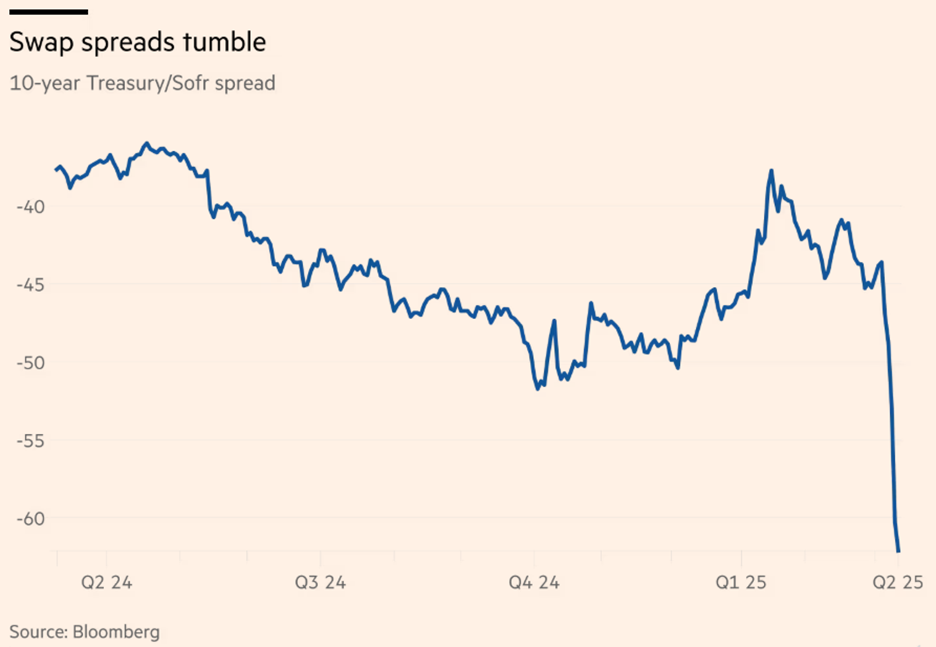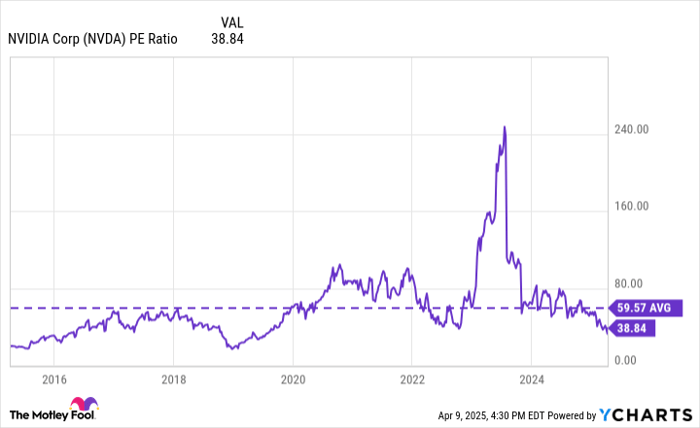Company Resilience Amid Tariff Uncertainties Highlights Market Volatility
Tom Yeung here with today’s Smart Money.
“BE COOL! Everything is going to work out well,” President Donald Trump declared on Truth Social Wednesday morning. “THIS IS A GREAT TIME TO BUY!!!”
The announcement turned out to be timely. Later that afternoon, Trump revealed a 90-day suspension on all “reciprocal” tariffs affecting non-retaliating countries. Consequently, American markets soared by 9%, while Asian markets experienced even larger gains.
Recognizing the potential for significant reductions in the tariff landscape, Eric recently acquired shares in a high-quality athletic apparel firm through his elite trading service The Speculator. This move aimed to capitalize on the positive implications of the tariff delay.
The company imports a substantial portion of its products from Vietnam and had been undervalued, poised for a strong rebound on favorable news. Here is what Eric shared with his subscribers…
The “Black Swan” tariff event is causing the selloff, not any fundamental flaw with the brand itself.
Therefore, if the swan simply flies away, the share price could soar….
If that change occurs, the new U.S. tariffs on Vietnamese imports could disappear entirely as well. I think that’s a bet worth taking. No one wants this trade war, particularly not the Asian nations producing much of the clothing we buy here in the U.S.
Thus far, Eric’s analysis has proven accurate. Shares of the firm rose significantly on Wednesday following the announcement, as most tariffs on Vietnamese imports—and almost all others except China—were postponed. Only a 10% tariff has currently taken effect.
That said, many investors remain cautious about future market movements and what could go awry.
So in today’s Smart Money, we will explore potential worst-case scenarios. Additionally, I will outline three strategies that savvy investors are employing as they navigate this unpredictable “will-he-won’t-he” tariff environment.
After all, Eric’s focus on that high-end apparel company isn’t his only recent investment recommendation. Let’s take a deeper look…
Imagining the Unimaginable
Throughout financial history, numerous disasters have emerged due to a “failure of imagination” concerning potential risks. In 1997, the Asian financial crisis was sparked by Thailand’s devaluation of its currency against the dollar. This single decision led to an 83% decrease in Indonesia’s gross national product and forced the resignation of two leaders. The Bank of Thailand could not predict such catastrophic results.
In the United States, the 2008 financial crisis similarly arose from oversight. Many banks and insurers underestimated how mortgage-backed securities could plummet in value amid widespread loan defaults driven by a sluggish real estate market.
From the savings and loan crisis of the 1980s to the dot-com bubble bursting in 2000 and even the Covid-19 pandemic, history is marked by crises that, with a little imagination, could have been foreseen.
Today, we are again facing the possibility of economic turmoil. President Trump’s fluctuating tariff policies are generating substantial fear and uncertainty in the markets. Moreover, there is no assurance that his tariff pause will last.
Bond markets are demonstrating caution. Recently, yields on 10-year government bonds have spiked from 3.8% to 4.5%, contrary to typical market behavior where falling stock prices would typically lead to lower yields.
This is a concerning indicator. The last comparable jump in the Treasury market occurred during the onset of the Covid-19 pandemic.
Further signs of tension are evident as leveraged positions unwind—often a precursor to financial distress. According to the Financial Times, hedge funds have recently closed out significant leveraged Treasury bets similar to those seen in March 2020.


Ed Al-Hussainy, a rates strategist at Columbia Threadneedle, observed in a Bloomberg News interview, “The most violent move in the last six weeks has been that swap-spread trade coming to a violent conclusion. This tells us that banks are now looking to raise and preserve cash.”
This reflects ongoing caution among experts about future developments. President Trump has shown he is willing to push the stock market to the brink of a bear market, and if high tariffs are ultimately implemented, we could see a rapid rise in inflation and potentially stagflation.
In light of these uncertainties, investors are recalibrating their portfolios by reducing risk exposure as they foresee an environment where the stakes may lead to significant market turmoil.
In this context, how is Eric preparing his subscribers for a potential future crisis that could remain just beyond the horizon? It’s essential to remember that panic selling often occurs at the market’s bottoms.
As we move forward, we will adopt three approaches to safeguard against uncertainty…
Investing Strategies for Navigating Post-Tariff Markets
Taking the Show on the Road
Eric’s approach to surviving market challenges is vividly illustrated in his Fry’s Investment report portfolio.
1. Blue Chip Companies
The first strategy emphasizes investment in blue-chip companies that offer limited risk and considerable growth potential. Within this category, Corning Inc. (GLW) is highly recommended in Fry’s Investment report. Established in 1851, Corning has a storied history of innovation, producing products like Pyrex glassware and Gorilla Glass.
Currently, Corning is positioned to benefit from a surge in demand for fiber-optic cables driven by AI-centered data centers. Recently, the company announced plans to manufacture solar panels using U.S.-made wafers and cells. Following a decline after its “Liberation Day” announcement, the stock rebounded, closing 10% higher on Wednesday.
2. Oversold Stocks
The second tactic is to target oversold stocks that have been negatively impacted by tariff-related panic. Just last week, Eric added a company to Fry’s Investment report that was trading at 16 times forward earnings, significantly lower than its historical average of 31 times.
Despite a double-digit gain on Wednesday, the stock still offers substantial upside potential. In sports betting terms, it represents a favorable wager where there is a 50% chance of a 30% loss and a 50% chance of a 100% gain, making it an appealing investment.
3. Tariff Winners
Finally, the focus shifts to companies outside the U.S. that are less vulnerable to the unpredictable nature of Trump’s trade policies. Earlier this year, Eric took positions in two countries that export only 1% to 3% of their GDP to the U.S. These nations possess strong fundamental factors that could help them perform well irrespective of U.S. market trends.
In his latest update from Fry’s Investment report, Eric introduced a new firm from Canada, benefiting from the growing “Buy Canada” movement. The firm, which produces all of its goods domestically, is poised to thrive despite a temporary 90-day pause on global tariffs, as Canadian consumers likely won’t shift their preferences for U.S. products overnight.
Importantly, this Canadian company is safeguarded from potential future tariffs due to its products being covered by the U.S.-Mexico-Canada Agreement (USMCA), signed by President Trump during his first term. Thus, even if tariffs are imposed on Vietnam and other countries after the pause, this firm can continue exporting tax-free to the U.S.
While I would like to dive deeper into this “heads-I-win, tails-I-don’t-lose” company, full details are available only to subscribers of Fry’s Investment report.
You can do that here.
In the interim, we maintain a positive outlook that the U.S. stock market will recover from recent downturns, as it historically has. However, as bond traders prepare for worst-case scenarios, strategic buying can effectively shield your portfolio from impending market reversals.
Regards,
Thomas Yeung
Markets Analyst, InvestorPlace
P.S. In the midst of current market volatility, substantial changes are occurring within the investing landscape.
Recently, Wall Street has intensified its utilization of AI to identify lucrative investment opportunities. In recent years, firms have heavily invested in developing this technology.
How can you keep pace in this increasingly tech-driven investment environment? Our partners at TradeSmith have identified an innovative solution.
On Wednesday, April 16 at 8 p.m. Eastern, they will unveil a remarkable new system called An-E. This AI-driven algorithm forecasts share prices for thousands of stocks, funds, and ETFs one month in advance.
Click here to register for the AI Predictive Power Event now.



